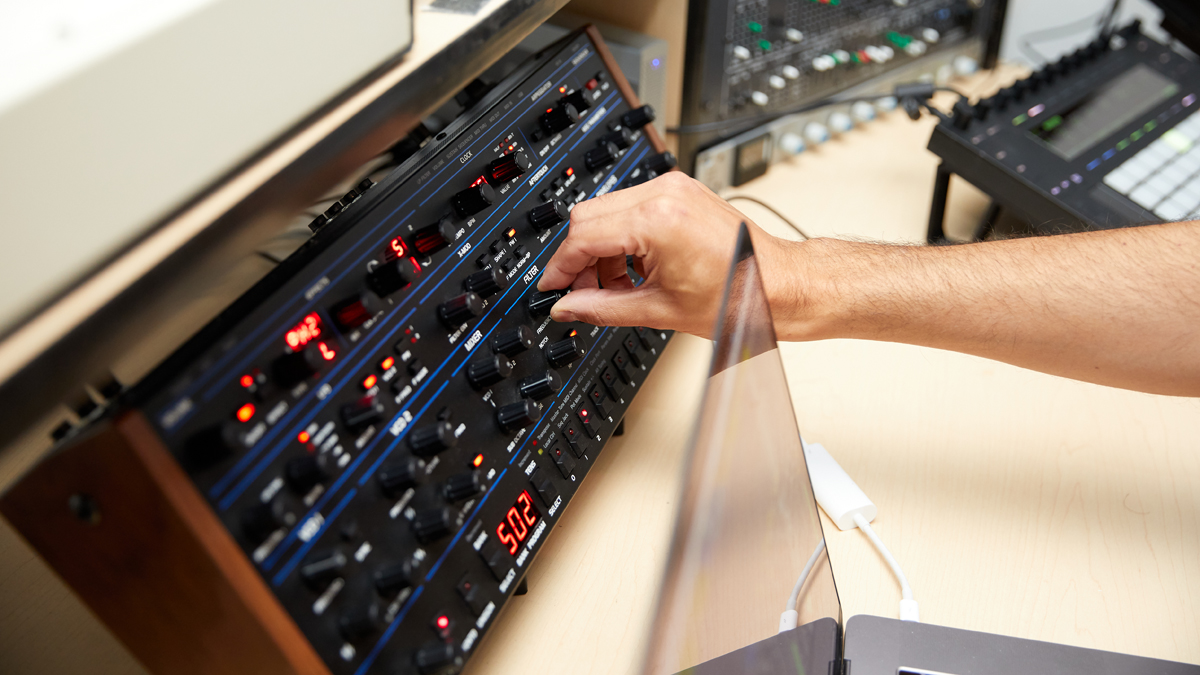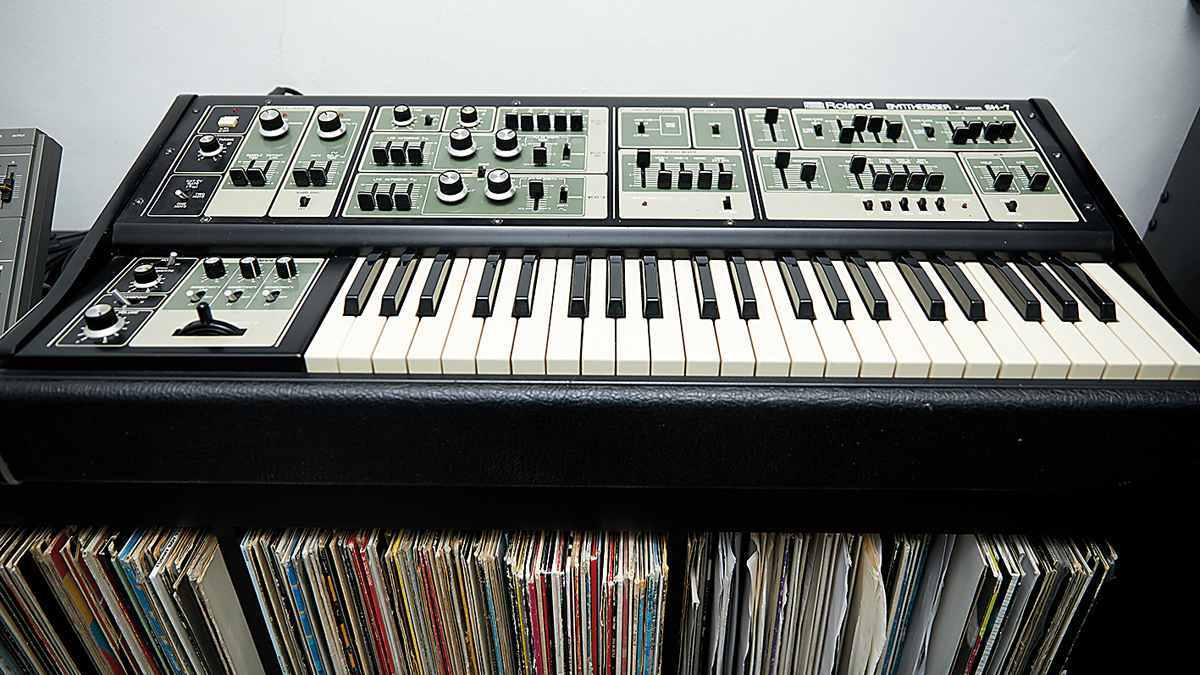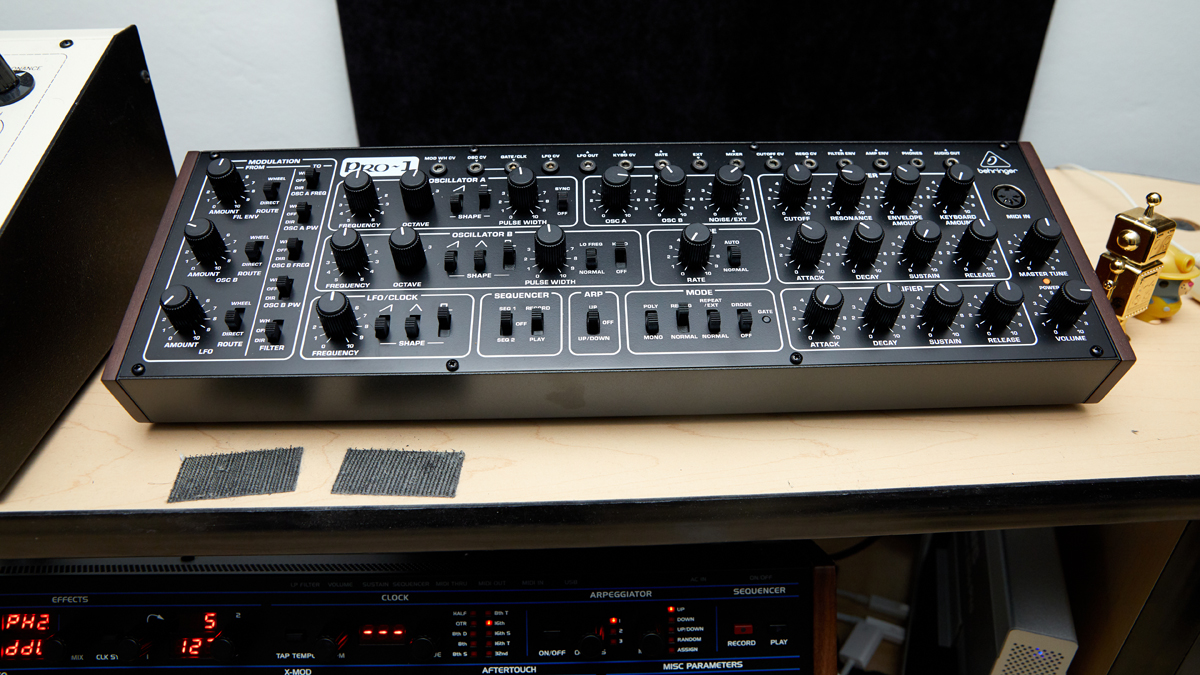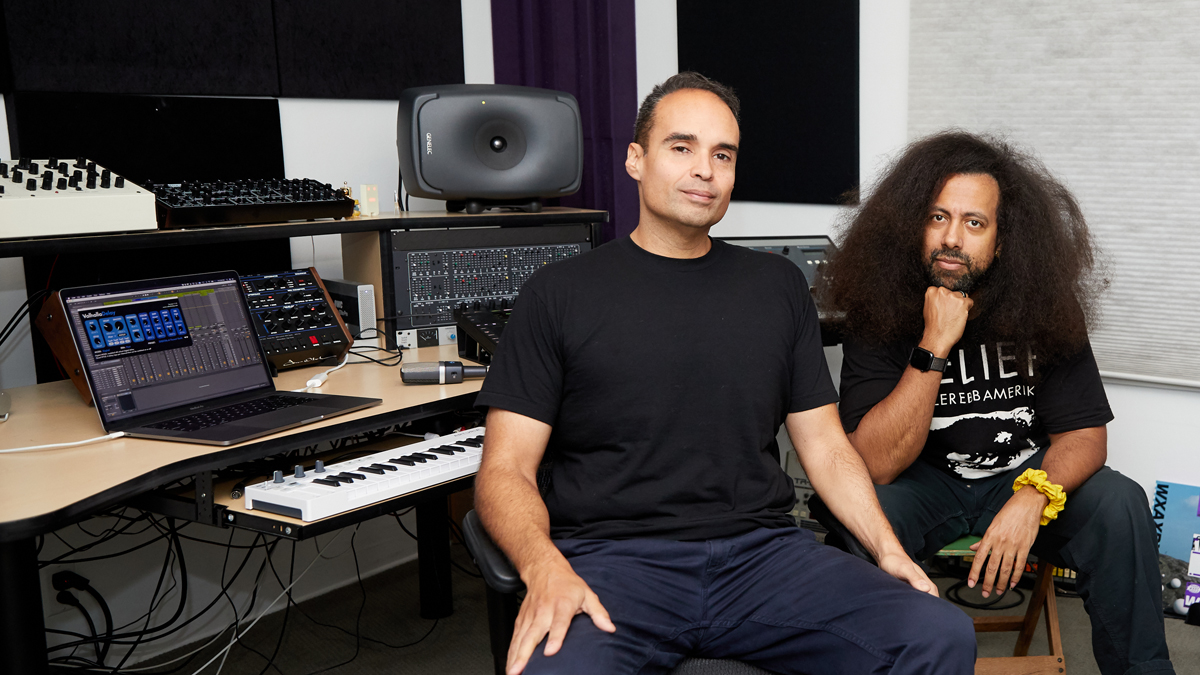Wajatta’s Reggie Watts and John Tejada: “As technology has progressed it’s done more harm than good”
The comedian/musician and techno producer discuss their creative partnership

Some of the best creative collaborations are also the most improbable. In 2017, beatboxer, comedian and musician Reggie Watts discovered techno titan John Tejada playing a late-night DJ set at an underground warehouse party in Los Angeles. A blossoming friendship ensued and the pair entered the studio in an attempt to unify their talents and create a refreshing play on their musical influences.
Forming Wajatta, a portmanteau of their last names, the duo hit the ground running with their debut release Casual High Technology. Acclaimed for Watts’ improvised beatboxed rhythms and Tejada’s hypnotic blend of synths and drum patterns, the duo returned to the studio to record Don’t Let Get You Down, released earlier this year, on which they found their roles beginning to seamlessly interchange...
When did you guys first meet and decide to work together?
John Tejada: “It’s been about three years now. Someone brought Reggie to one of the underground parties I was playing at - he was there quite early and I just kind of saw his hair. I was familiar with what he did and kind of figured he was more of a music head than a musician, but we inevitably decided to do something.
‘All my collaborations over the years have come from just hanging out and growing as friends. Now we don’t even need to speak to each other while doing our thing; we’re all synced up and in our comfort zone.”

Did you have shared ideals when it came to making music or was it more a case of opposites attracting?
JT: “I assumed that we came from the same musical upbringing, but that differed more than I expected and we didn’t have any preconceived ideas. Reggie’s a fan of underground dance music, so I figured that would be the first place to play around, and we’re both performing musicians so it made sense to make recordings and do shows.”
Want all the hottest music and gear news, reviews, deals, features and more, direct to your inbox? Sign up here.
As mentioned, you were very much in tune with each other regarding your influences…
Reggie Watts: “We’re both of the same generation, so a lot of our pop references are similar. I was part of the hip-hop culture in the ’80s but fell off in the early ’90s. Then I got into electronic music and DnB. We both love making compositions and sharing production methods, so we created Wajatta which is our last two names mushed together. It’s so dumb and so simple that most people miss it.”
You’ve being working with the band Maktub for many years. Primarily as a vocalist... or were you heavily involved in the production side?
RW: “I was songwriting for sure, but most of the ways we came up with stuff was through improvisation. I know a little about production but always had more ideas for vocal sounds and things of that nature. I’d say I’m more of a performer/singer-songwriter - and sometimes synth player!”
John, you’re quoted as saying it shouldn’t be painful to have fun and make art. Do you think the world of production starts off painfully and gets easier as you get older?
JT: “I think it’s the opposite. The initial sparks either happen or they don’t and it’s the last 10% that’s kind of annoying. When Reggie and I get a couple of things going, things start to move really fast - then the danger is having too much content to finish off. The hardest part of production is when the track is nearly there and you’re going over it with a finetooth comb. I hate that part because it’s all about making final decisions.”
The hardest part of production is when the track is nearly there and you’re going over it with a finetooth comb.
RW: “There’s a song that you might not be familiar with that had the lyric ‘I’ll be your firestarter’. It always reminds me that it’s easy to start fires but hard to put them out. You can start a million tracks and think they’re dope and cool, but in the final editing process there comes a point where you have to stop, which is weirdly harder than starting.”
JT: “As technology has progressed it’s done more harm than good. I was just reading today about Tom Jenkinson [Squarepusher] going back to making stuff the way he did in 1996. There’s a few of us doing that because you didn’t have so many options back then. Now you can look at something in a million different ways, which makes production more difficult than it needs to be.”
Is that applicable to hardware as much as the proliferation of software?
RW: “I have friends like Tim Exile, Beardyman and Imogen Heap who do a lot of incredible looping and live production. They have so much gear and tech and I have three pedals. I can’t handle it and often feel like if I see another error message on a rectangular screen I’m going to shoot someone.
“So, for me, the least amount of options produces greater creativity.”

How do you feel about creativity itself? Does keeping that fire burning get progressively difficult as you get older?
RW: “This might sound like a dumb sentence, but I was in a carpool with Brian Eno and we were talking about careers, creativity and how things have progressed. He offered me this piece of advice - make as much as you can while you’re able to because you don’t know when that might turn off. I guess there was a period in his life where he didn’t feel very creative at all - songs and lyrics used to come very easy to him and one day they didn’t.
“I guess the lesson is not to take creativity for granted. I can’t imagine ever not having that because my brain is eternally curious and I don’t get in my own way. That’s one of the reasons I like working with John, because I’m able to do what I love and he gets it. We don’t question it too much; we just let it be what it is. I turn off once we start getting into the minutiae.”
That initial surge of creativity artists have seems to be unsustainable over a long career…
JT: “Yes, and I think money ruins anything and everything. We’ve not made any off of this project yet so if we get really bad we’re probably ready to start making money [laughs].
“I’ve had success at a smaller scale where something got on the charts, everybody’s playing it and you start thinking ‘ooh, what else will they like?’. That’s a really dangerous place to put your mind because when you made that one tune you weren’t thinking about that. The tracks I’ve been really lucky with are also the ones I was really ashamed about, yet that was probably when I was at my most honest and original.”
It must be hard not to chase success without it feeling counterintuitive?
JT: “If you get in that mode you’ll maybe start getting pressure from the label and begin to overanalyse things - then you’re fucked and it starts to feel like a job. I’ve prided myself in not repeating those moments and turning them into manufactured sequels. At the moment Reggie and I are just exploring things we’re interested in, and because that still feels new there’s no sense of repetition.”
RW: “You have people like Diplo and his crew who have found something that works in an industry sense and they’re just pumping that stuff out. That’s commendable if that’s what they want to be doing, but for Wajatta it’s about doing what we really dig. Sometimes we feel people will like what we do, but we’re primarily writing for ourselves and having a good time. In doing so it translates through the music and we can feel it running through the process.”
You have people like Diplo and his crew who have found something that works in an industry sense and they’re just pumping that stuff out. That’s commendable if that’s what they want to be doing, but for Wajatta it’s about doing what we really dig.
You clicked quickly to produce your first album Casual High Technology. Was the process different for this follow-up?
JT: “This time around we completed the tracks and did more things together from beginning to end. Reggie’s playing more keyboards on this record, doing beats, and I’m singing more. The process may have slowed us down, but it’s solidified the content. It’s the same formula and not that complicated.”
Reggie is known for his improvisational lyrical approach, whereas you’re more precision-tuned. Did you have to adapt to his way of working?
JT: “It was a case of I do what I do and Reggie does what he does, so let’s see if it syncs up. When we play live it’s slightly more improvisational. Reggie uses the gear he’s used to for solo shows and so do I - we just clock them together and let it happen. It’s pretty restriction-free, but sometimes we fall upon things and try to do more of it.”
RW: “Because I’m mostly an improviser I like everything being fast and creative. That keeps me in the zone and the ideas fresh. There wasn’t a lot of adaptation because I did tons of gigs in my 20s where I was singing with DJs who were plugged into a mixer and playing with onboard effects. It’s mostly the same vibe.”
How was the transition from studio to live?
RW: “In the beginning we were trying to do the tracks as they were on the record, but now John has them loaded and is doing live production performance. Sometimes I remember all the parts and other times we just go for it.”
JT: “I feel like we’re doing covers of our own stuff. I’ll start with something skeletal that’s not meant to sound too exact and a lot of Reggie’s vocals aren’t really words - he’s doing an imitation of what was on the record. There was one show where we just used old Roland gear, played patterns and that went on for 90 minutes. Sometimes I would cue up a machine if I wasn’t brave enough to make a new pattern with everybody hearing it, and I feel that way of performing is something we’re working up to even if it’s tough to pull off in front of a big crowd.”

Is that how you worked in the studio, with Reggie performing lyrically over a skeletal demo?
RW: “On the first record it was definitely John creating structures with me performing over them and adding some light synthesizer stuff. This time I’d play around with a beat and add a bassline, which might inspire a pad sound.
“There’s one track on the record that was fully improvised, which was John throwing down a drum beat and programming an arpeggiator that I performed live. That way of working is a dream for me. In the ’90s, I had a live improvised drum ‘n’ bass band - it wasn’t all that great, but the idea of generating a high production value from electronic music has always been very intriguing to me.”
Was walking into John’s studio like going into a toy shop?
RW: “It was awful - so messy, cluttered and dark. It was damp and there was so much gear everywhere that I was tripping over wires… No, it was quite the opposite. I’ve been in Dave Sitek’s studio from TV On The Radio but John’s is the complete reverse. I feel way more comfortable walking into John’s studio because it’s much more chilled and organised.”
Were you looking to perform with instruments that have an element of immediacy, rather than the modular setup for example?
JT: “I’m trying to catalogue the 30 tracks in my head. I used a few hardware things that were hands-on and gave me that immediacy but it was bit like playing golf - does this track need a driver or a three iron? On the ideas side, I’d have an idea to create some vibey sound and that would spark other sounds.
“I’ve been struggling to make things simple recently. If the studio exploded I’d grab the laptop because there’s so much great VST stuff these days, but also my speakers, interface, one really cool monosynth and a really cool poly.”




What gear are you most drawn to these days?
JT: “The Cwejman S1 semi-modular and the Dave Smith OB-6 for poly. We’re still using the Moog Voyager quite a bit for basslines and we got out the Deckard’s Dream polysynth a couple of times. I’ll turn to the Eurorack system once in a while, but I don’t want to plug in ten cables just to get a starting point.
"I’m becoming more sample-based than I have been for a while. I still use the E-MU SP-1200 and like my vintage samplers like the Akai S612 and Casio FZ-10 - things that can give me that quirky vibe.
“Early on, when samplers only had 25 seconds, I’d load every second up with a sound and sequence from there to see what I got. I found myself really comfortable in that place and have gone back to that. Even if I’m using the modular or a polysynth, I’ll grab those sounds, throw them in the sampler and explore that further. By reversing or tweaking the notes you get all these unnatural harmonics, and once you start transposing that around things start sounding kind of techno.”
It’s important for us to do this stuff in person, because these moments don’t happen when you work remotely.
RW: “For me it’s all accidental stuff. Sometimes I thought John left a mistake in, but he said, no, no, that’s supposed to be there [laughs].”
JT: “Thank you Reggie. That’s why it’s important for us to do this stuff in person, because these moments don’t happen when you work remotely. Unless it’s something specific, I’m not a fan of sending files.”
How do you know when to ditch an idea that’s not working - especially when one or the other might have an attachment to it?
RW: “I don’t think we’ve ever agonised over that sort of thing. If you’re working with a regular vocalist who’s sitting with a notebook and writing out lyrics there might be some resistance because you have more of an attachment to it, but because everything is being improvised and generated live I’m not particularly married to anything because I know we can generate a lot of stuff.”
But at some point John you no doubt wanted to spend time tweaking the material? Was mixing done in your own time?
JT: “We did a couple of mixes together all the way until the end, which was part of what we discussed earlier about not wanting to be stuck with too many options. With this record, we went through the content together and did the scary stuff while we were still in the same place. That helped me a lot because Reggie can see it more as ‘music’ where I might be stuck on how two sounds are fighting each other in a frequency. It made the whole production process more pleasurable and come out better.”

I have to ask you about the track Marmite, where Reggie seems to adopt an English cockney accent. What’s the idea there?
JT: “That track was a bit unique because I was messing around with the SP-1200 and getting excited to have that back in my life. Usually, everything we do gets edited or layered, but Marmite’s five minutes of Reggie being completely raw and a dream example of no editing.”
RW: “It was definitely me just ranting. A friend of mine’s English and we were talking about that old-school battle between Vegemite and Marmite. I was just imagining roommates fighting over things, like ‘someone drank all my oat milk’, or ‘who ate all the Marmite?’. It’s usually whatever’s on my brain.”
JT: “What came out is this honest expression of our influences. It’s just dance music in general that’s now been categorised into a lot of different styles, whether it’s Renegades at the beginning of the album or Little Man, which is more of a rap-style thing. It all blends together for me, which is something that almost needs to be explained these days.”
RW: “The one unifying thing is that it’s music to make you move and all the stuff within the electronic world that we dug. John and I talk about Art of Noise sometimes and think, ‘Peter Gunn? What was that? What the hell happened?’”
JT: “That was part of the hip-hop culture over here. I don’t know about England, but I’d imagine beatbox made its way into stuff and they were looked at as a rock band. Kraftwerk’s the same. It blew up in the hip-hop scene but people called it Krautrock so it existed in multiple cultures as multiple genres. I guess our goal, if we can do it, is to get all different people to connect to the music we make.”
RW: “When I sing, I do a lot of vocalism where the track sounds ‘electronic’ but it’s not like your typical electronic track. Maybe that attracts people that normally wouldn’t consider listening to us, because it doesn’t sound like ‘house’ or ‘techno’.”

Are you particularly influenced by European electronic music and new wave?
RW: “Oh my god, if I could live in a simulation that existed between 1978 and 1985 I’d be completely happy. What was being generated then was one of the greatest periods in music history. New wave and post-punk, and the whole culture around them, have had a huge influence on me.
“I’m a huge industrial head - I love Nitzer Ebb, Front 242 and Ministry and keep coming back to those cats. When I’m doing a vocal line, closing my eyes and listening to the track I’m thinking of Depeche Mode or imitating those early Fairlight vocal samples. The greatest crossover that influenced me was Jimmy Jam and Terry Lewis working on The Human League’s Human at the same time they were about to embark on Janet Jackson’s Control.
“Although new wave was very British, there were so many things complementing it in the US generating the look, feel, tonalities, sophistication, raw power and disgusting nature of that era, and those are all I need to generate anything.”
Did you latch on to those influences John or was it more about the American dance scene?
JT: “I’ve recently had an Echo and the Bunnymen phase, and coincidentally learned quite recently that Bill Drummond of The KLF signed them when he started Zoo Records. It feels like it’s all connected. Besides that era and Trevor Horn, Throbbing Gristle - just because they did so much shit they weren’t supposed to and made it into music.
EDM is a great descriptor for what everybody’s doing, but it’s become a very dirty word.
“My biggest compliment to the British scene is that they took influences from Chicago, Detroit, NY and LA and made it something else. I love a lot of the bleep scene and ambient house hit me massively - The Orb and Future Sound of London were a great combination of everything I liked, and when I first started figuring out how to produce that’s the first place I went.”
RW: “I also think Britain was going through a lot of interesting political dynamics. The creation of The Sex Pistols mixed with druid-based occultism that came through in bands like Bauhaus and The Cocteau Twins. Liz Fraser’s Gaelic mixed with gibberish is one of my biggest vocal influences because you don’t have to worry about lyrics and you’re immediately transported down this magical dark route.
“When I’m coming from that point of view, I feel like I’m at my most sincere, compared to when I’m in Selena Gomez territory, which is when I feel existentially lost.”
Today, it feels everything’s lumped into EDM…
JT: “EDM is a great descriptor for what everybody’s doing, but it’s become a very dirty word. In the ’90s Trance was the big thing pre-EDM, and then bigger companies started getting involved and doing events. It’s essentially pop music that’s club music, but they exist hand in hand.
“There are a lot of academic tools that get developed and 20 years later become democratised so people can make music easily. It’s the same balance with underground artists pushing the envelope. That trickles over to the business side then everybody adopts those sounds.”
RW: “There’s so many labels for so many things these days. You get one pie that comes out the oven and divide it into quarters, then you keep dividing and dividing until it’s a meaningless pile of mush.”
The Wajatta album Don’t Let Get You Down is out now on Brainfeeder.


Future Music is the number one magazine for today's producers. Packed with technique and technology we'll help you make great new music. All-access artist interviews, in-depth gear reviews, essential production tutorials and much more. Every marvellous monthly edition features reliable reviews of the latest and greatest hardware and software technology and techniques, unparalleled advice, in-depth interviews, sensational free samples and so much more to improve the experience and outcome of your music-making.
